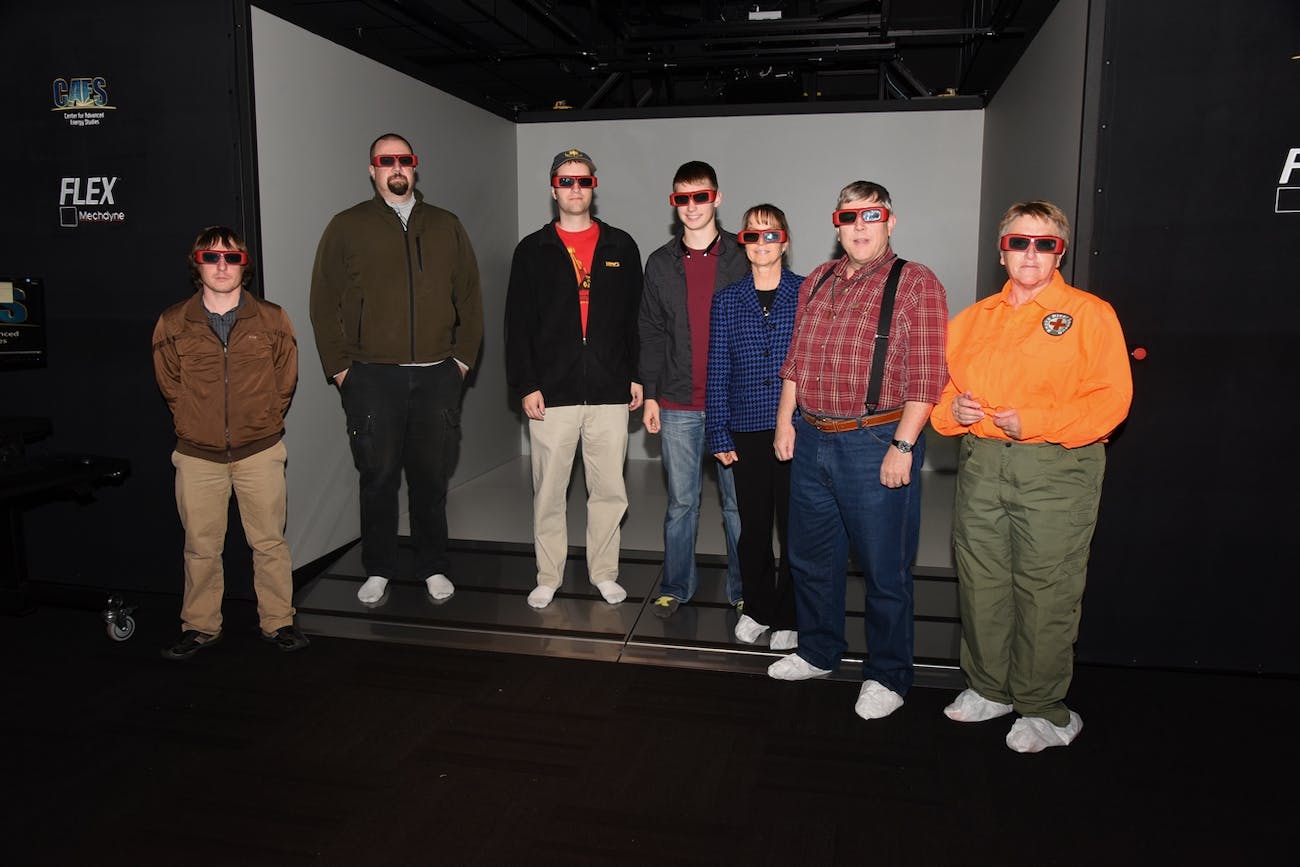When Hillcrest High School student, Jason Hale, pondered ideas for his senior project, he was inspired by his summer internship at Idaho National Laboratory and his adventures in the nearby mountains of sprawling Bonneville County, Idaho. Conversations with lab personnel, input from county search and rescue staff, and months of hard work resulted in a new tool that could assist with remote rescues.
The project used INL’s advanced visualization tools to photograph one of Bonneville County’s most-traveled mountain areas. Hale used the pictures to recreate the landscape in a 3-D virtual environment, which local search and rescue teams could use to learn the terrain.
“Bonneville County is so big that it’s impossible to know all of the areas,” said Matt Fluke, commander of Bonneville County Search and Rescue. “So having this in a high traffic area really helps.”

When Hale contacted Fluke about his project, Fluke suggested Rash Canyon near Swan Valley, Idaho, because mountain bikers, hikers and ATV motorists frequent the area.
Hale contacted INL researcher, Mathew Balderree, an unmanned aerial vehicle pilot, about photographing the area. The drone could only be flown in sight of the pilot, so Hale and Balderree hiked to the top of a peak for the best view.
“We had to climb up this really steep, shale hill with all of our equipment in our hands,” Hale said.
With a camera attached to the drone, Balderree used a grid line pattern to fly over an area of about 190 acres in just 45 minutes. The camera took 233 pictures. These pictures were also geotagged, a technique used to electronically assign a geographical location to a photograph.
Hale used software to stitch together the geotagged aerial images into a giant mosaic. This data was loaded into the Computer Assisted Virtual Environment (CAVE) at the Center for Advanced Energy Studies at INL. The immersive 3-D environment lets users interact with their data or environment to gain new insights.

Inside the CAVE, the search and rescue team could see the recreated 3-D version of Rash Canyon’s terrain.
Danny Anderson, an INL employee with a doctorate in Geographical Information Sciences, is a volunteer for Snake River Search, Inc. He leads the search analysis support team and said search and rescue teams currently use 3-D maps to assist in planning, conducting and assessing searches. The maps are used to see streams, trails and depressions that may not be represented in topographical maps.
Anderson sees Hale’s virtual environment project as another tool that can enhance the preparation of search and rescue teams.
“Jason has taken this capability to the next level by developing 3-D models that provide a virtual reality where the observer, using a pair of 3-D glasses, is placed within the model,” Anderson said. “In Jason’s model, trees, boulders, power lines, fence posts and such, stand up and take shape, even to the point of revealing branches and leaves in the trees.”
Hale credits his mother, an avid cyclist, with providing the inspiration for his project, stating that when people spend time in the mountains there’s always a chance of getting lost.

One person who could have benefited from this technology was Renae Albiston of Idaho Falls. She was involved in a four-wheeling accident and was lost in the Rash Canyon area for more than 24 hours before search and rescue teams found her. Albiston is now a volunteer with Snake River Search, Inc. and was excited after viewing Hale’s finished project.
“I can’t believe the technology,” she said. “I can see how it would be very useful for search and rescue teams.”
While Hale’s technology and the use of drones for search and rescue has hurdles to overcome before they become a regular practice, this project offers a glimpse at what is possible.
Hale’s senior project is his second experience with INL’s efforts to support science, technology, engineering and math (STEM) education. During the summer of 2015, he was an intern working with scripts and coding for software that supports INL’s Advanced Test Reactor programs. He enjoyed working on both projects and envisions a career in engineering.
“I’d like to be a mechanical engineer and work for a car company helping design cars,” he said.







